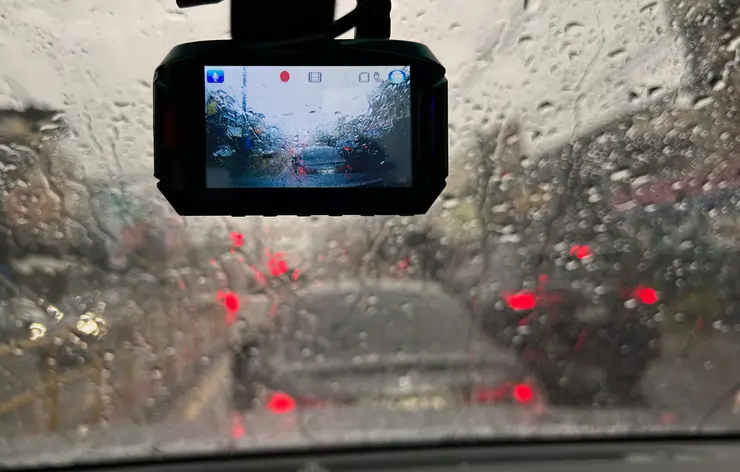
In the dynamic realm of fleet management, safeguarding the assets and ensuring operational efficiency is paramount for business owners. One of the most effective measures to achieve this is by integrating advanced vehicle camera systems. These systems offer a plethora of benefits that enhance safety, streamline operations, and bolster accountability within the fleet.
Enhancing Safety and Accountability
Vehicle camera systems, including the crucial dash camera, are designed to monitor and record the activities in and around fleet vehicles. By capturing real-time footage, these systems significantly mitigate the risk of accidents and ensure drivers adhere to safe driving practices. For business owners, this translates into fewer incidents on the road, reduced insurance premiums, and a safer working environment for employees. The visual evidence provided by these cameras can also serve as a deterrent against negligent driving, as drivers are conscious of being monitored.
Operational Efficiency
Implementing vehicle camera systems into the fleet management strategy can lead to significant improvements in operational efficiency. The recorded footage can be utilized to review driver performance, identify areas requiring improvement, and provide targeted training. This proactive approach can lead to more efficient routes, better time management, and ultimately, cost savings for the business. By analyzing the video data, fleet managers can optimize driving patterns and reduce fuel consumption, contributing to overall operational excellence.
Dash Camera: A Vital Component
A key element of vehicle camera systems is the dash camera. Dash cameras are strategically mounted on the dashboard to provide a clear view of the road ahead. These cameras are crucial for capturing incidents such as collisions, near-misses, and traffic violations. The footage from dash cameras can serve as invaluable evidence in the event of an accident, helping to resolve disputes and protect the business from false claims. Furthermore, the presence of dash cameras can deter reckless driving, as drivers are aware that their actions are being recorded.
Boosting Customer Confidence
In the logistics and transport industry, maintaining customer trust is vital. Implementing vehicle camera systems can assure clients that their goods are being transported safely and efficiently. The ability to provide video evidence in case of delays or damages can enhance customer satisfaction and loyalty. Clients are more likely to trust a company that prioritizes transparency and accountability, leading to stronger business relationships and repeat engagements.
Legal and Insurance Benefits
The use of vehicle camera systems, particularly dash cameras, can offer substantial legal and insurance benefits. In the event of an accident, the recorded footage can provide clear evidence of what transpired, which can be crucial for insurance claims and legal proceedings. This not only expedites the claims process but also helps in ensuring that the right parties are held accountable. Insurers often offer lower premiums to fleets equipped with camera systems, recognizing the reduced risk of fraudulent claims and accidents.
Future Trends in Asset Tracking and Vehicle Cameras
The future of asset tracking and vehicle camera systems is shaped by several emerging trends and technologies:
- AI Integration: Artificial Intelligence for predictive maintenance and advanced data analytics. AI-powered asset trackers and dash cameras can predict when equipment will need maintenance, reducing downtime and extending asset lifespan.
- Blockchain Technology: Ensures secure and transparent tracking of assets across supply chains. Blockchain can enhance the security and reliability of data provided by asset trackers and dash cameras, making it tamper-proof and easily verifiable.
- Advanced IoT Applications: More interconnected devices for comprehensive monitoring, including innovative asset trackers and vehicle cameras. IoT advancements will enable more detailed and accurate tracking, integrating various data sources for a holistic view of asset usage.
Conclusion
Implementing vehicle camera systems, including advanced dash cameras, offers numerous advantages for businesses, from cost savings and improved efficiency to enhanced security and compliance. As technology evolves, these systems will become even more integral to business operations.
What Businesses Need to Provide for Implementation
To successfully implement an asset tracking and vehicle camera solution, businesses need to provide:
- Asset Inventory: A detailed list of assets to be tracked.
- Business Objectives: Clear goals for what the tracking solution should achieve, emphasizing the role of asset trackers and dash cameras.
- Integration Requirements: Information on existing systems that need to integrate with the new solution.
- Budget: A financial plan for the implementation and maintenance of the system, including asset trackers and vehicle cameras.
- Training and Support: Resources for training employees and ongoing support, particularly for the effective use of asset trackers and dash cameras.
By adopting the right vehicle camera system and leveraging advanced dash cameras, businesses can streamline their operations, safeguard their assets, and position themselves for future growth.


